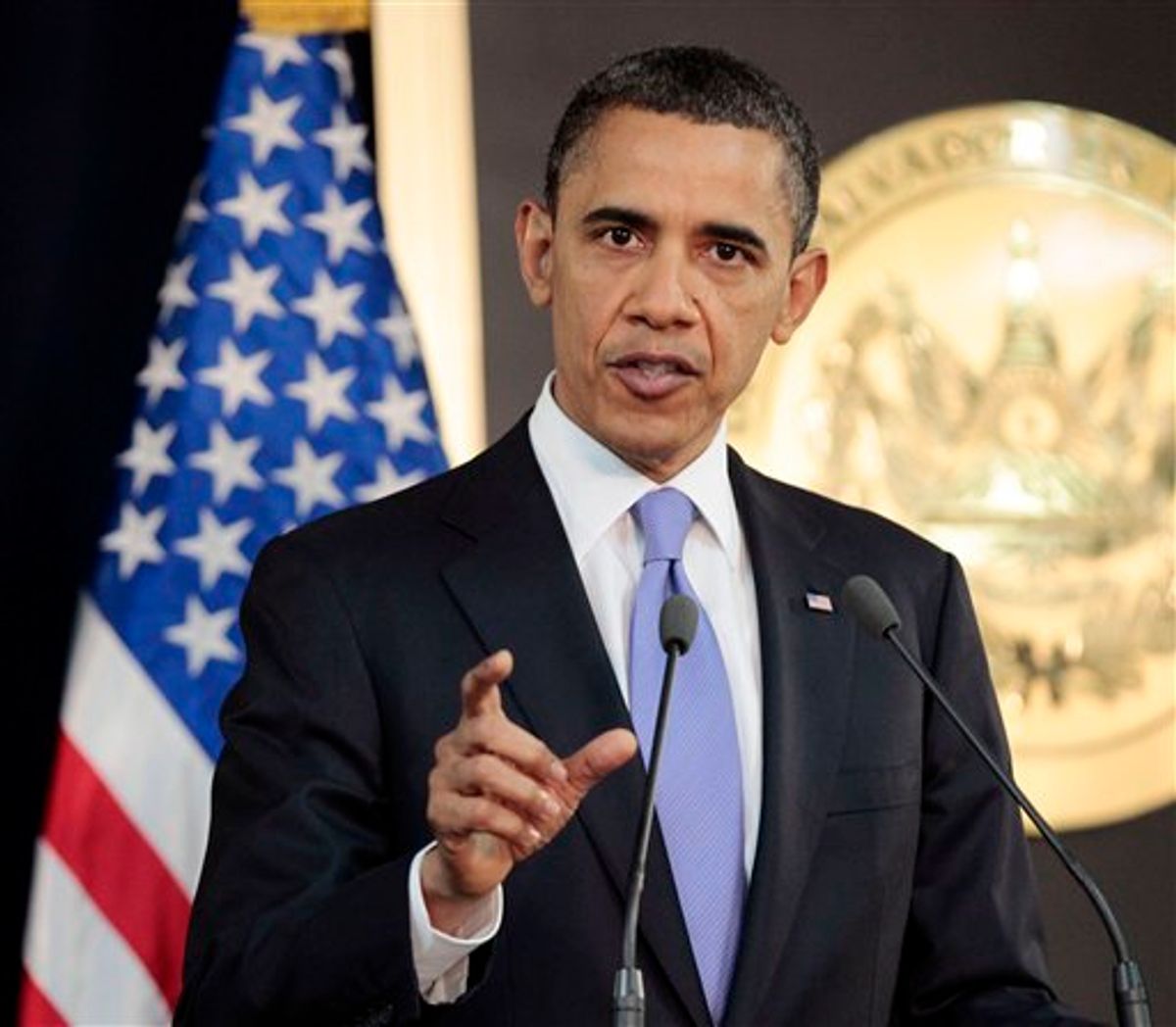Calculating the U.S. price tag for the no-fly zone in Libya is hardly simple math.
Four nights of a U.S. and European assault easily tops hundreds of millions of dollars as the international coalition seeks to undermine Moammar Gadhafi's air defenses and save the rebels from likely defeat. The cost could rise moderately if the U.S. role is limited, with the Pentagon using its existing budget to cover the expense, or it could jump significantly if the operation drags on for weeks or months.
As of Tuesday, the coalition had fired at least 162 sea-launched Tomahawk missiles priced at $1 million to $1.5 million apiece and dispatched B-2 stealth bombers -- round-trip from Missouri -- to drop 2,000-pound bombs on Libyan sites.
Total flying time: 25 hours. Operating cost for one hour: at least $10,000.
Yet those numbers only provide part of the costs. The B-2 bombers require expensive fuel -- and rely on air tankers to refuel in flight -- and probably needed parts replaced upon their return to Whiteman Air Force Base. The pilots most certainly will get combat pay.
An array of U.S. warplanes; 11 ships steaming in the Mediterranean, including three submarines, two destroyers and two amphibious ships; and one F-15 fighter jet that crashed, costing $75 million or more -- it all adds up to numbers that unnerve budget-conscious lawmakers.
"Every six hours we have another billion-dollar deficit," said Rep. Roscoe Bartlett, R-Md., a member of the House Armed Services Committee. "This could cost us a billion dollars there, which means simply another billion-dollar debt that our kids, our grandkids and our great-grandkids are going to have to pay back."
The Center for Strategic and Budgetary Assessments, in an analysis this month, estimated that the Libyan no-fly zone could cost $100 million to $300 million per week.
In a classified briefing for congressional staff Tuesday, officials from the State Department, Pentagon and Treasury were pressed on the cost. They declined to address the issue.
Rep. Dennis Kucinich, D-Ohio, said he would offer an amendment to the next budget resolution that would prohibit taxpayer dollars from being used to fund U.S. military operations in Libya. His effort could gain significant congressional support, including the backing of tea partiers, if the U.S. military operation is going full-bore when lawmakers return from their recess next week.
"We have already spent trillions of dollars on the wars in Iraq and Afghanistan, both of which descended into unwinnable quagmires," Kucinich wrote his colleagues. "Now, the president is plunging the United States into yet another war we cannot afford."
The government already is operating on a series of stopgap spending bills for the current fiscal year amid the clamor to cut the budget, including defense dollars. The Pentagon has requested $553 billion for the fiscal year that begins Oct. 1, plus $118 billion in war costs for Iraq and Afghanistan.
"The Pentagon really needs to do this on the cheap," said Loren Thompson, head of the Virginia-based Lexington Institute and adviser to several major defense contractors. "If someone suggests more money to do the Libyan operation, most voters would say, 'Let's not do the Libyan operation.'"
In the past, the United States has footed the bill for some costly no-fly zones.
In the 1990s, the U.S. participated in Operation Noble Anvil, an air assault in Yugoslavia. Enforcement of the no-fly zone lasted from March 1999 to June 1999, and cost $1.8 billion. After the first Persian Gulf War, two no-fly zones in Iraq to protect citizens from Saddam Hussein's wrath cost about $700 million a year -- from 1992 to 2003.
Rep. Howard Berman of California, top Democrat on the House Foreign Affairs Committee, said he expected lawmakers to make a spending cut exception for national security.
"Do we sit out the whole transition in Egypt or are there roles we can play?" Berman said. "Even the most rabid budget-cutters have as a general proposition accepted the notion that national security matters are treated differently than other matters."
The Congressional Research Service said the costs of establishing and maintaining a no-fly zone can vary widely based on several factors, including the duration of the military operation, the specific military actions, the size and terrain of the targeted country, and whether "mission creep" occurs. The latter is an expansion of military steps toward the same goal.
Obama reiterated Tuesday that the United States will turn control of the operation over to other countries within days.
"I'm glad that we've kept atrocities from happening to a civilian population, but I want us to make sure that we quickly move away from there, and can clearly define when that's going to be and what it is we hope to accomplish in the process," Sen. Bob Corker, R-Tenn., a member of the Senate Foreign Relations Committee, told reporters in Nashville.
Associated Press writer Erik Schelzig in Nashville and AP broadcaster Gerry Bodlander contributed to this report.



Shares